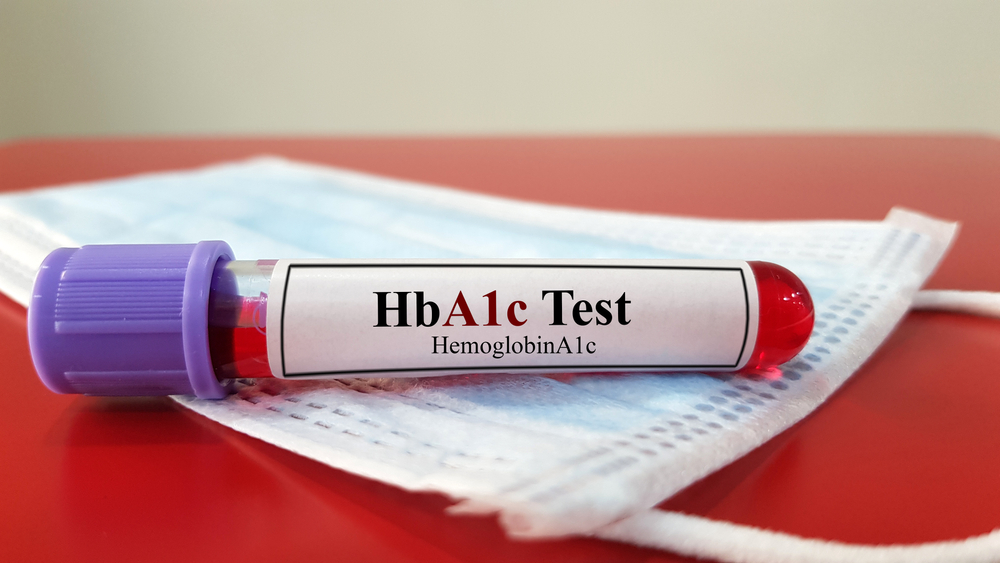HbA1C Test – A Smart Means to Map Glucose Level in the Body
The A1C test, also known as an HbA1C, hemoglobin A1C, glycated hemoglobin, or glycosylated hemoglobin test, is a blood test used to diagnose and monitor diabetes. It shows your average blood sugar levels for the past two to three months. This is a broader test than conventional glucose monitoring, which measures your blood sugar at any given moment.
Importance of HbA1c Test
Do you regularly measure your fasting and after meal blood sugar to keep a check on your diabetes? Think that is enough?
Not actually!
Though the fasting and post meal tracking of blood glucose is important, these tests can only check your blood sugar at a certain point of time. Their results might vary depending on what you had eaten over the last night or in the previous meal. However, the HbA1c test looks at the 3-month data and cannot be biased.
For persons having diabetes, HbA1c numbers give a fair idea of how controlled their diabetes is. As per scientific evidence, having a smaller HbA1c number means lesser risk of developing complications due to diabetes. Raised HbA1c value has also been regarded as an independent risk factor for heart disease and stroke in people with or without diabetes.
Screening for Diabetes
If you’re overweight or obese and you have one or more other risk factors for developing type 2 diabetes, your healthcare provider will likely order an A1C test as part of your annual medical exam.
Such risk factors include:
- A parent or sibling with diabetes
- Being physically inactive
- Being overweight or obese
- Having a high waist measurement
- High blood pressure
- Polycystic ovary syndrome (PCOS)
- High triglycerides
- Low HDL cholesterol
- A history of heart disease
The majority of people who end up with type 2 diabetes have prediabetes first, which means that their blood sugar is higher than normal, but not high enough to be diagnosed with diabetes. The A1C test can help monitor for this condition.
The American Diabetes Association (ADA) also recommends that everyone age 45 and older have the A1C test, regardless of other risk factors, because age itself is a major risk factor. If your test results are normal, you should have the A1C at least every three years.
If you were diagnosed with gestational diabetes (diabetes while pregnant) that resolved after you had your baby, you will need to be tested at least every three years for the rest of your life as well.
The A1C test can be used to screen high-risk pregnant women for undiagnosed pre-existing diabetes too, but only in the first trimester. During the second and third trimesters, diabetes needs to be screened with a glucose challenge test (also known as an oral glucose tolerance test) instead.
Diagnosing Diabetes
If you have symptoms like needing to urinate more often, feeling excessively thirsty and drinking more than normal, an increase in appetite, fatigue, cuts or bruises that heal slowly, and/or blurry vision, your healthcare provider may order an A1C test to check you for diabetes. Other symptoms may include weight loss or pain, tingling, or numbness in your hands or feet.
Monitoring Diabetes
If you’ve been diagnosed with type 1 or type 2 diabetes, you’ll periodically have an A1C test or other glycemic tests to monitor how well your disease is controlled and how your treatment is working.
How often you’ll be tested will depend on what type of diabetes you have, how controlled it is, and what your doctor recommends, but it will likely be at least twice a year.
HbA1c Results
The results of the A1c test are presented as a percentage. The test result shows the amount of hemoglobin that glucose has bound to in your blood.
For diagnostic purposes, the test results may be as follows:
- Normal/ Healthy: Below 5.7%
- Pre-diabetes: 5.7–6.4%
- Diabetes: 6.5% or more
There are certain factors and some medical conditions that can change the HbA1c result slightly and even lead to a higher reading. Some conditions that can cause a false A1c number include:
- Liver disease
- Kidney disease
- Recent blood loss or transfusion
- Low iron levels
- Certain blood-related conditions
Your doctor is the best guide to analyse the results.
High A1C, No Symptoms of High Blood Sugar
If your A1C was high but you don’t really have symptoms of high blood sugar, you may have another A1C test done.
Alternatively, your doctor may decide to do a fasting plasma glucose test (FPG) or a two-hour glucose tolerance test right away instead.
In order to confirm the diagnosis of diabetes without the obvious symptoms of high blood sugar, two test results have to be abnormal. That could be two results of the same test (A1C, FPG, or two-hour tolerance test), or one result of one and one result of another.
High A1C With Symptoms of High Blood Sugar
If you do have symptoms of high blood sugar and your initial A1C is high, this will confirm a diabetes diagnosis—especially if you also had the random plasma glucose test done and that was high.
This means that your doctor will need to see you as soon as possible to discuss starting a treatment plan to manage your diabetes.
This plan will depend on whether you have type 1 or type 2 diabetes, but may involve insulin supplementation, medication, glucose monitoring, exercise, and lifestyle changes.
Your healthcare provider will likely repeat the A1C soon after you’ve started treatment to see how it’s working and how well you’re complying.
Borderline/Prediabetes
If your A1C, FPG, or two-hour tolerance test results are borderline, your healthcare provider will
repeat them at least every six months, as recommended by the ADA, to monitor your condition.
They will likely also talk to you about lifestyle changes you can make that can help prevent diabetes.
COVID 19 and HBA1c
The entire pandemic situation has made managing diabetes well more important than ever for people having diabetes. HbA1c gives you a sneak peek into how well your blood glucose has been doing over the past 2-3 months. Look for trusted labs and safe services when you have to take an HbA1c test. Have to get tested and not sure where to get it done? Book an HbA1c test and get tested within the comfort of your home.
According to research conducted to assess the status of prediabetes and diabetes in the combined population of Chandigarh and Panchkula region based on both Indian Diabetes Risk Score (IDRS) and Glycated Haemoglobin (HbA1c).
- Out of 1215, a total of 444 subjects were found to be at high risk (≥60 or known diabetes status) which were further assessed according to HbA1c levels.
The final prevalence of diabetes was found to be 12.67% and prediabetes 11.69% in the combined population of Chandigarh and Panchkula
Meet Our MD, Dr. Charandeep Singh Sahni
We take pride in the fact that we are led and driven by the innovative and humanitarian approach of our honourable managing director, Dr Charandeep Singh Sahni. Carrying several years of experience in medical services under his belt, Dr Sahni has been actively involved in organizing and conducting national and state-level conferences at TMH. He specializes in lymph node pathology, GI pathology, head and neck pathology, and breast pathology.
Medical Academic Background and Career at a Glance
- MBBS from the prestigious Grant Medical College and Sir JJ Hospital, Mumbai with distinction in Biochemistry and Pharmacology in 2000.
- MD in pathology from Tata Memorial Hospital, Mumbai from 2003-06.
- Worked as Senior Resident in Department of Histopathology at PGIMER, Chandigarh.
Research and Papers Presented by Dr Sahni
Dr Sahni also demonstrated his professional achievements by presenting his research works at several eminent conferences. Some of his research work was published and referred by eminent medical journals.
- He presented a poster on “Aorto-Left Atrial Fistula” in APCON 2003 at Bhubaneswar.
- His paper on “Analysis of Renal Cell Carcinoma: A Study of 173 cases” in APCON 2005 at Pune was lauded by the healthcare community.
- In 2006, he demonstrated an important piece of research titled “Distribution, clinicopathological characteristics and immunophenotyping of Hodgkin’s Lymphoma: A study of 313 cases using WHO classification (2000)” at APCON 2006 in Bangalore.
Key Published Works:
Dr Sahni has also been involved with many articles published by leading science and medical journals.
- Bothra R, Pai PS, Chaturvedi P, Majeed TA, Singh C, Gujral S, Kane SV. Follicular dendritic cell tumour of tonsil – is it an underdiagnosed entity? Indian J Cancer 2005; 42 (4): 211-4.
- Charandeep S Sahni, Sangeeta B. Desai. Distribution and Clinicopathological characteristics of non- Hodgkin’s lymphoma in India: A study of 935 cases using the WHO classification of lymphoid neoplasms (2000). Leukaemia and Lymphoma 2007; 48 (1): 122-133.
- Charandeep Sahni, Sangeeta Desai. Primary testicular precursor B-lymphoblastic lymphoma: A rare entity. Leukaemia and Lymphoma 2007

